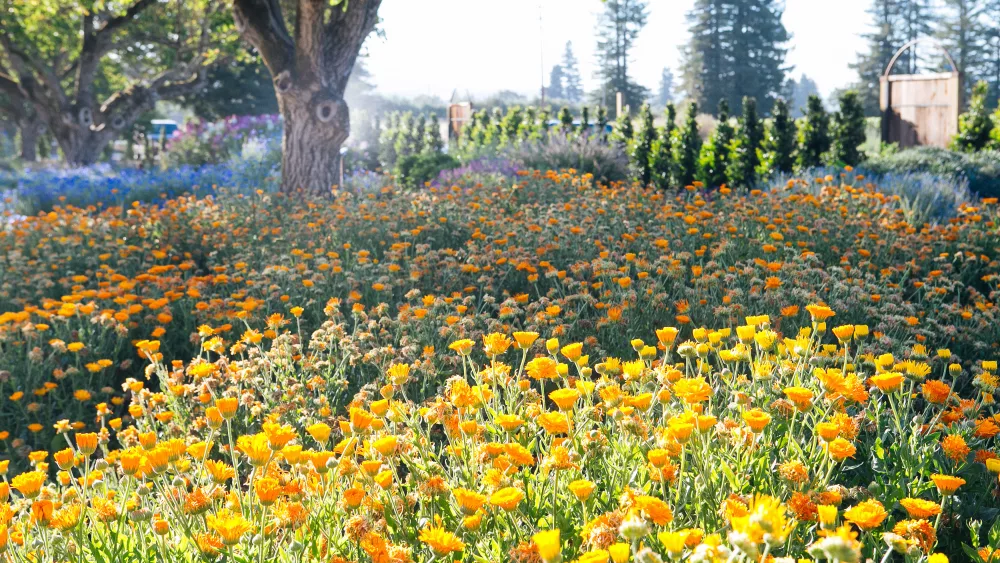Sonoma County has changed, and not in a good way for some residents of unincorporated agricultural areas. The issue is cannabis, and although some of them supported legalization of marijuana for recreational use, cultivation of the plant close to their homes has impacted them in ways they never expected, intruding on a peaceful lifestyle and forcing them to fight battles they didn’t anticipate. The problems began to emerge soon after California voters approved legalization in November 2016. Sonoma County’s cannabis ordinance didn’t go into effect until November 2018, and in the interim, a Penalty Relief Program allowed existing growers to continue cultivation while they went through the process of applying for permits. New operations also sprang up, however, often with owners from outside the county who had no consideration for either their neighbors or the environment. Many of those growers were unable to comply with the Sonoma County Cannabis Ordinance and are gone now, but the memories and impact of their foray into rural neighborhoods remain.
Impacts
Carol Vellutini lives in west Santa Rosa and also owns mountain property, where growers illegally trespassed on her land left a mess. “I was stuck with all the contamination and garbage they [the growers] left behind,” she says. She removed more than 50 water containers, miles of plastic water lines, camping equipment and toxic chemicals that were left in a previously pristine forest. “I can’t possibly take all this stuff out,” she says. “I have a beautiful creek flowing through my property,” she adds, explaining that it’s a habitat for salmon. But renegade growers pumped water out of the creek and adjacent tributaries, causing significant environmental damage after the county had spent vast resources on waterway recovery. They also trimmed trees and graded one former jeep trail without permission. “This is private property; I enjoy native plants and the serene setting,” says Vellutini. Much of the pleasure her pastoral setting gave her is gone. “My property was raped,” she says. “The effects will last a long, long time.”
A resident of Petaluma, whom we’ll call Denise because she asked not to be identified, lives in a residential community in an area zoned diverse agricultural, where several homes on acreages share a driveway. One parcel was sold to a man from Los Angeles, Denise reports, but he wasn’t interested in the neighborhood. Rather, he appeared to have one goal: to grow cannabis and make a living at it. “It’s his right to do so, but his operation was going to be right next to the driveway,” she says, and in addition to increased traffic, its proximity to the homes was a concern. Denise realizes that cultivation is a legitimate and legal activity in an agricultural area, but she finds the minimum distance a grow site can be from an inhabited structure—300 feet—to be too close. “It’s a very small amount of space. Your front door can be one football field away from a 10,000 plant grow,” she points out. “This topic is so new that people don’t understand 10,000 plants don’t smell like a faint skunk in the distance,” she says. Her family found the odor overwhelming. “Every year we have a cookie bake, but you could not smell the cookies in the house because it was overpowered by cannabis smell,” Denise says.
In addition, in harvest season, people would drive onto her 10-acre parcel of land to scope out the property and barn. “The feeling of security in your house is gone,” Denise laments. The grower was unable to meet the conditions for compliance, so his permit was denied, and she believes the county did the right thing. “I’m happy the book is closed on my story.”
Starting from scratch
The Sonoma County Board of Supervisors adopted a series of ordinances in December 2016 to establish a comprehensive local program to permit and regulate medical cannabis business. The cannabis program had three goals: to preserve environmental resources, to protect the health of the community and to ensure the new industry contributed to the county’s economy in a positive way.
Nearly two years later, in October 2018, the county completed the first phase of a two-part ordinance update. The first phase had a limited scope, focused on neighborhood compatibility issues and aligning the ordinance with state law where appropriate. Phase two will include a more thorough review of neighborhood compatibility. The county recognized that for the cannabis program to be effective, it had to bring owners of cannabis businesses into a regulated program that would require them to comply with standardized practices. The program involved several departments, including zoning and permits, as participants in implementation. Regulating a new industry, however, is complex, and it will take several years to establish a successful program.
“As the county has implemented the current cannabis ordinance and seen the first wave of applications, we have learned much about this new industry and issues related to neighborhood compatibility,” reports Maggie Fleming, communications manager at Permit Sonoma. She explains that the cultivation of commercial cannabis is limited in agricultural, resource and industrial zones, and new permits require properties to be a minimum of 10 acres, with cultivation, processing and distribution allowed on up to 1 acre. She confirms that the minimum distance from residences is 300 feet, but most permits specify larger distances. She reports that in December 2016, the county eliminated cannabis cultivation in rural residential and agricultural residential zones, thus reducing the number of parcels by 31,177 throughout the county.
Starting in October 2018, Sonoma begin requiring lots be a minimum of 10 acres in agricultural and resource zones, eliminating an additional 5,142 parcels. By June 2019, the county had issued four Use Permits, which included three for outdoors and one for mixed light, and 28 outdoor Zoning Permits, which are limited to a maximum of 10,000 square feet. The owners have to meet requirements related to visual impacts, security, fencing, lighting, odor and noise, as well as expanded setbacks in areas considered sensitive, such as those with schools.
Fleming acknowledges that odor is a serious concern, and she explains that the county investigates complaints on a case-by-case basis. The setbacks from homes are intended to mitigate the impact of outdoor growing, but cultivation can never be odor-free. It cannot, on the other hand, be a public nuisance or create a health or safety risk either. “Applicants should invest time and energy into informing their neighbors on the business practices and earnestly engage in a dialogue about possible solutions to mitigate nuisances and concerns raised by neighbors,” she advises, adding that all permits are for a limited term, and the county is closely monitoring them. Fleming adds that use permits require early neighborhood notification and public hearing notifications to properties that are 300 to 1,000 feet from a project, and she urges neighbors to get involved. “Stay informed, be active in the process and ask questions of staff and applicants,” she says. “Public engagement is an important part of the County of Sonoma’s permitting and land-use decision-making process.”
When residents do become involved, however, they often find it’s a frustrating and time-consuming process. Sebastopol resident Bill Krawetz had two operations near his home, and neither received a permit. They’ve since closed, but between late 2016 and October 2018, one graded the land, erected a greenhouse and installed power without any indication of cooperation with the county. That property still hasn’t been cleaned up to his satisfaction. “This has resulted in me personally spending hundreds of hours dealing with a problem not of my making. I’ve had over 300 emails back and forth on the two cannabis applications in my neighborhood,” he says. He feels the county considered and cared about his concerns, but he wasn’t always sure the interests of the neighbors were as important as those of the grower.
Conflict and seeking solutions
While many of the problems have been with unpermitted growers, even those permits can have a negative impact on neighbors. A resident of western Sonoma County, whom we’ll call Jasmine because she does not want to be identified, reports she feels like a hostage in her own home. “We haven’t had company for two years. It’s too scary,” she explains. Jasmine’s near-by neighbors intrude on her privacy with surveillance cameras, and attack dogs guarding the grower’s property once chased her husband, forcing him to take refuge atop a pickup truck. In addition, bright lights illuminate her property at night. “You used to be able to see the stars and sky. Now it’s like carnival lights,” she says, observing that the lights are at odds with environmental soundness and can’t be beneficial for deer, owls and other wildlife.
One of her biggest disappointments is the lack of responsiveness from the county. Jasmine reports she did not receive notification that the property owners had applied for a permit to cultivate cannabis, and she perceives a lack of care and kindness. “We pay $13,000 a year in taxes, and no one will help. What’s happened to my community?” she asks. “It’s always been close-knit. Now everyone’s gone.” Jasmine and her husband plan to leave, too. She’s sad and will take a big financial loss because the neighborhood activity has devalued her property. Nothing, however, could convince her to stay in an area she describes as having lots of land, lots of road destruction and a lot of broken hearts.
Save Our Sonoma Neighborhoods is a coalition of residents who have banded together to prevent situations like Jasmine’s. They’ve encouraged the county to adopt common-sense regulations relating to the commercial cultivation of cannabis and to preserve Sonoma’s rural character. They have stories galore. Margie Cramer lives near Cazadero in an area with three different subdivisions in agricultural zones with a long history of cannabis growing. Each property has 40 acres, and they also have some common areas, such as a creek where people swim and a place for neighborhood activities. “We have codes, covenants and restrictions as do other homeowner’s associations,” she says. Two absentee property owners have leased their property to people who aren’t vested in the community, however, and they ignore the HOA’s regulations. “They’re just making a profit on growing their product. That was not the intention of our subdivision,” she says. Three growers have applied for permits, but the HOA has since passed a rule against all commercial leases. She adds residents were aware things would change with legalization, but they also knew the logistics and practicalities and were wary of the county’s approach, believing it lacked sufficient staffing and resources. “The impact on us is that we have no one to hear a complaint,” she says.
Lauretta Hayes is a former resident of Cougar Lane, east of Santa Rosa, which has 16 homes lining a 10-foot-wide road. She had three grows on her property line, and armed men and loose pit bulls prevented her from walking on her easement and made her feel unsafe. Workers spent all night long taking out product so it was frequently noisy, and one operation had two major home invasion robberies. “One guy went up on the ridge in June and shot off fireworks,” she says, but it took a sheriff’s deputy 45 minutes to arrive. He was unable to cite the man, because he didn’t catch him in the act. “I’m committed to people being successful in life. When businesses thrive, communities thrive,” says Hayes. However, she believes the county is overwhelmed and doesn’t have the resources to be more diligent. “I don’t think it’s easy,” Hayes says. But she points out that if officials are too focused on tax revenue cannabis can bring, they won’t understand the impact of legalization on neighborhoods.
Deborah Eppstein has lived on Cougar Lane for seven years and loves to jog and ride her bike, but has had several close calls as cultivation operations caused traffic to increase. The drivers of the cannabis trucks were not respectful of the residents and the narrow winding road, almost running her over on several occasions. Fire also became a concern. Careless workers tossed cigarette butts out of their vehicles onto the dry roadside, and during the wildfires in October 2017, one of the growers blocked the only alternate escape road with boulders to prevent fire trucks from interrupting the harvest. Residents had to evacuate, and the fire department used a bulldozer to remove the rocks. “Pot farms create fire hazards with indoor grows as well as drying operations. They don’t below on long, winding roads in remote, fire-prone areas,” Eppstein says. She’s been working on informing people about the risk of fire. “It’s been slow going, but I think we’re seeing some progress.” In addition, all of the grows on Cougar Lane have since been shut down as a result of problems with their applications. “We were happy with the way the county responded.”
Another perspective
Not all growers have a contentious relationship with their neighbors. Erich Pearson is the founder and chief executive officer of SPARC, a respected vertical cannabis company headquarted in Santa Rosa. SPARC cultivates cannabis at a licensed farm in Glen Ellen and distributes cannabis through their five retail dispensaries in Santa Rosa, Sebastopol and San Francisco. During the fires in October 2017, SPARC’s Glen Ellen team helped their neighbors in various ways, such as sheltering and feeding their animals. Pearson believes it’s important to develop good relationships with the owners of nearby properties. “Whether it’s any sort of project or development in an agricultural setting, it’s important that operators reach out to their neighbors and be proactive,” he observes. Cannabis farmers need to listen to their concerns, and he advises them to do so sooner rather than later. He points out that the cannabis industry is coming from a past where it was illegal, and in the absence of information, people tend to rely on past understandings that may be inaccurate.
He believes that anyone still left in Sonoma County’s permit process likely has a solid application, because to have made it this far, one must have a serious level of professionalism and capital. He explains that the ordinance is quite restrictive, with an array of requirements including setbacks from property lines, schools and biological areas, and applicants also have to consider county zoning and building requirements, as well as the regulations of several state agencies. “These aren’t fly-by-night operators. Illegal grows and trespass grows are issues from the past,” he says. He reports that most of the cannabis industry that existed in Sonoma County two years ago has disappeared. “We want a regulated, contributing cannabis industry in Sonoma County,” he says.
Clearly, implementing regulations in a new industry creates substantial challenges, but with many of the unpermitted cultivators out of the picture, it should become easier. Sonoma County’s cannabis ordinance is due for an update later this year, and that could mean significant changes. It’s an ongoing process and unlikely to satisfy everyone in the short term. It’s an experience that comes with a learning curve, however, and it’s likely to take time and patience to get everything right. Pearson is optimistic and believes success is within reach. e ;preHe preidickkkk“From a regulatory perspective, I think we’ll look back in four years and wonder, ‘What was the big deal?’”





